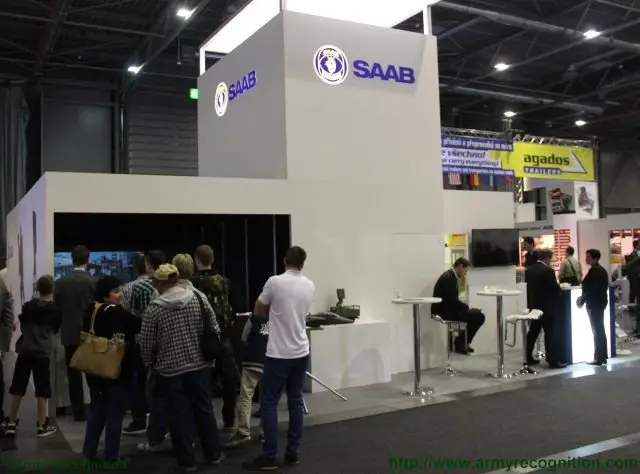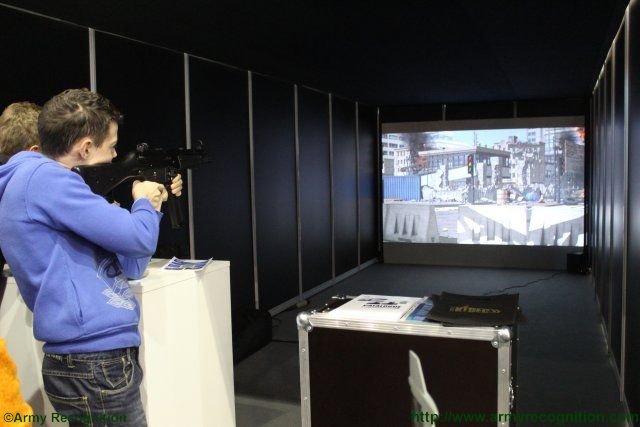 |
|||||
|
IDET 2015
Official Online Show Daily News and Official Web TV International Defence & Security Technologies Fair 19 - 21 May 2015 Brno, Czech Republic |
|||||
|
Saab at IDET 2015
|
|||||
|
|
|||||
|
|
|||||
| Saab demonstrates Small Arms Virtual Indoor Trainer at IDET 2015 | |||||
|
Defence and security company Saab is participating at the International Defence and Security Technologies Fair (IDET) 2015 held on May 19 – 21 at Brno Exhibition Centre in the Czech Republic. Saab’s wide portfolio of defence systems is being demonstrated and presented, among them the Simulators for Anti-Tank Weapons and Small Arms Weapons (Small Arm Virtual Indoor Trainer - SAVIT).
|
|||||
|
|
|||||
 Saab's booth at IDET 2015 Defense & Security Exhibition, Brno, Czech Republic Saab's booth at IDET 2015 Defense & Security Exhibition, Brno, Czech Republic |
|||||
|
|
|||||
|
“IDET is one of the most important shows of defence technology and Saab is happy to take part with its state-of-the-art solutions”, says Mats Fagerberg, Head of Land Segment Marketing and Sales, CEE at Saab. “Apart from Gripen and RBS70, both operational also with Czech armed forces, Saab will bring some of its simulators developed and produced in our global centre for virtual simulators in Slavkov, the Czech Republic”, added Fagerberg.
The SAVIT system provides an effective, realistic training of small arms firing. SAVIT functions cover all phases of modern firing training, from basic weapon skills theory, marksmanship training up to tactical training. SAVIT allows individual marksmanship training at static and moving targets up to a distance of 5,000 m and group tactical training of tactical decision making, communication within the squad, and coordination of fire and targets prioritization. SAVIT's ballistics software realistically simulates all weapon types and ammunition types and the influence of weather conditions. SAVIT generates 3D immersive visual cues with different virtual terrains, target models, battlefield effects and different weather conditions. SAVIT consists of shooting posts, training weapons, visual system, a precision aimpoint detection system, sound system and instructor operator station. SAVIT has scenario editor software to create or edit fight scenarios. SAVIT includes software for detailed exercise evaluation and database system for storing the results, generating reports and monitoring progress of individuals and groups.
The main portable system components are integrated into a compact anti-shock and waterproof transport case (SYSBOX), which dimensions are 60 x 100 x 40 cm and the weight is 65 kg. The Projection Screen ( 3 x 1.8 m ) is supplied in a separate ruggedized case. The portable SAVIT size is suitable for one to four trainees. The system supports geo-typical and geo-specific virtual terrains. The virtual terrains can be of various types, e.g. such as the European, desert, jungle or winter terrains. Terrain sizes are from 5 x 5 km up to 50 x 50 km. The visual system is able to display targets at a distance of up to 6 km. The system realistically simulates weather conditions, collision effects between the virtual objects, ammunition effects and ammunition interaction, including dynamic changes in the terrain. SAVIT is provided with terrain and scenario editor software enabling the creation of own virtual terrains with vegetation, buildings, roads or water areas. SAVIT uses a COTS graphic engine. |
|||||
 Saab's Small Arm Virtual Indoor Trainer - SAVIT on display at IDET 2015 Saab's Small Arm Virtual Indoor Trainer - SAVIT on display at IDET 2015 |
|||||
|
Saab's SAVIT supports all types of small arms such as pistols, rifles, sniper rifles, machine guns, grenade launchers and anti-tank weapons. SAVIT offers replica guns, modified weapons and instrumentation kits for real weapons. All training weapons are equipped with sensors for monitoring the weapon status and evaluation of proper weapon handling. The system allows the simulation of weapon malfunctions and evaluates malfunction clearance procedures. The lifetime of training weapons is typically higher than 1.5 million shots.
Simulated training weapons can be replicas of real weapons or modified real weapons. Replica weapons are high fidelity copies utilizing some parts from the original weapons, such as trigger mechanism, sights, housing or stock. Replica weapons are suitable for those types of weapons where originals are not available or are very expensive. Modified original weapons re-uses major weapon parts such as bolt receiver, trigger block or parts of the barrel. Both replica and modified weapons are completelysafe and cannot be used for firing live or training ammunition. The simulated weapons can be completely tether-less using data radio communication and compressed gas recoil system. Simulated weapons can be equipped with a unique double stage recoil system, to ensure realistic shooting effects. SAVIT simulates the high-precision ballistic trajectory of a projectile including the effects of wind speed and direction, air pressure,temperature, Coriolis force, bullet drift and dispersion. The ballistic simulation compensates for aimpoint detection errors such as parallax error, distance estimation error and elevation angle error, caused by the trainees distance to the screen. Target damage effects are evaluated based on the target geometric vulnerability model, type of ammunition, ammunition impact speed and ammunition impact angle. Conversion kits allow quick and easy integration of real weapons into training without any modification or degradation of the real weapon. Conversion kits provide the same simulated functions as replica weapons and comprise a recoil simulation module, a sensor module and a weapon interface module. The recoil simulation module for the pistol replaces the barrel and the magazine. The recoil simulation module for the rifles and machine guns is attached to the silencer mount. The contact-less sensor module is inserted into the trigger mechanism and provides complete weapon status. The weapon interface module is attached to the trainee's belt and provides weapon control and wireless communication with the system. The weapon interface module is also connected to a source of compressed gas. Compressed gas could be supplied from paint-ball CO2 bottle, also attached to the trainee belt. Such configuration allows the trainee the freedom of movement. |
|||||














